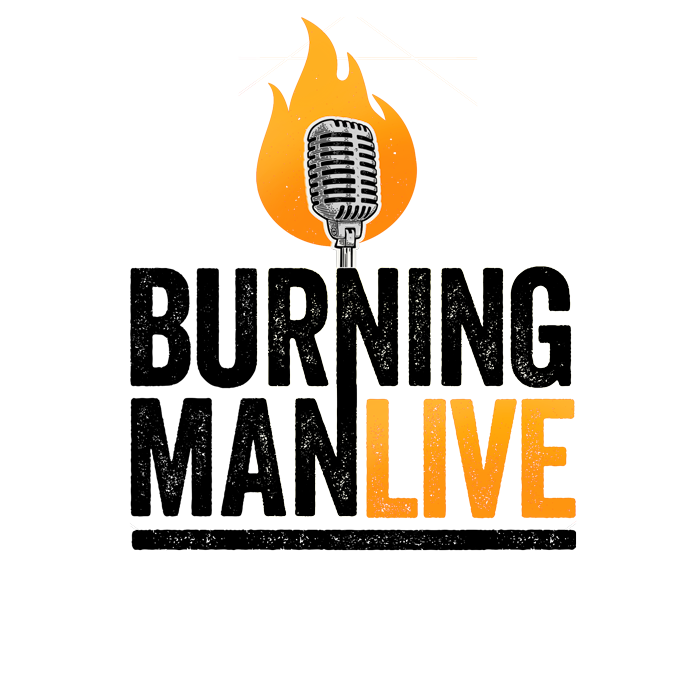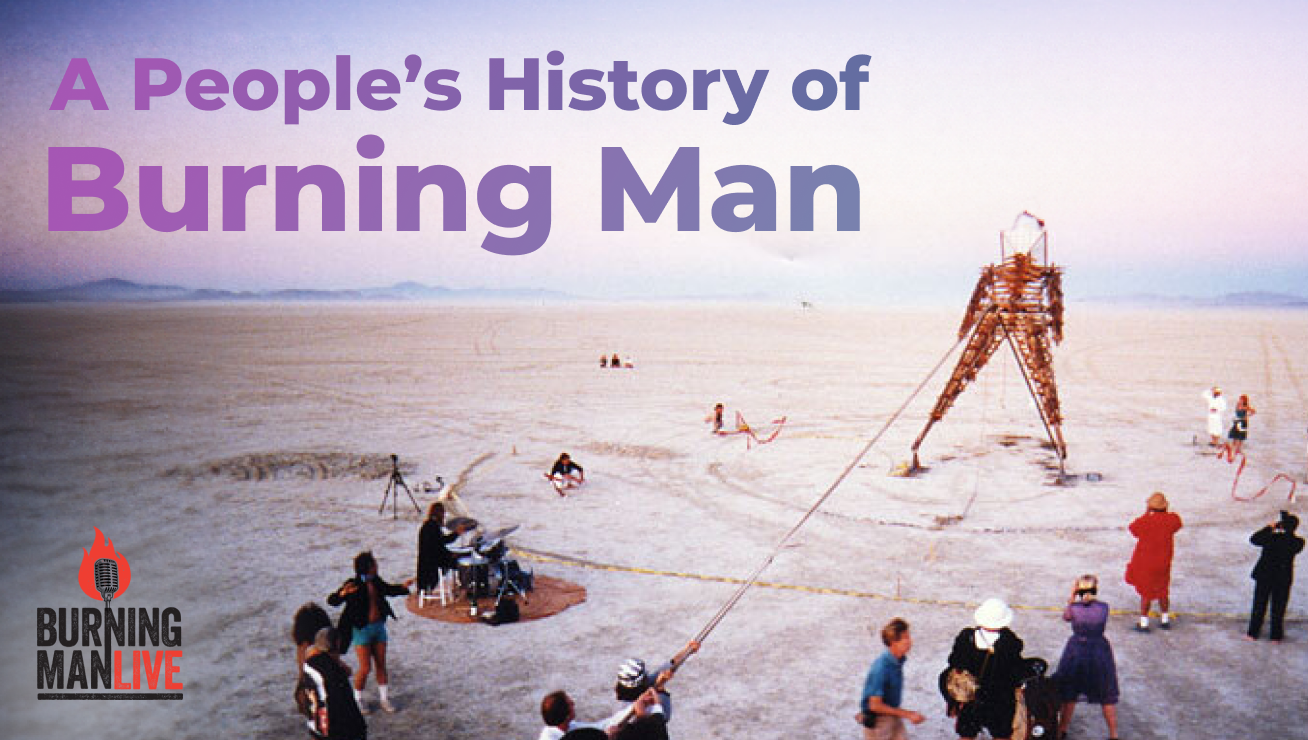
A People’s History of Burning Man
Stories. This collection is from Burning Man’s oral history project, an ambitious endeavor to track down and record interviews with people who helped shape the culture as we now know it.
Stuart and Andie “Actiongrl” Grace keep remembering the most memorable parts so far, so they’re sharing them with you for your gratification and edification.
- Lamplighters founder Steve Mobia talks about the San Francisco Suicide Club, the even-stranger start to the legendary Cacophony Society.
- Denzil Meyers recounts the earliest days of the Cacophony event now known as Santa Con.
- Lexie Tillotson remembers what it was like driving to Burning Man in the wayback days when you needed luck and a compass.
- Kimric Smythe recalls the year that the Man Burn into a hot mess.
- Stewart Harvey shares about traveling to Northern Ireland with artist David Best to build a Temple for “The Troubles.”
dispatch2022.burningman.org/the-philosophical-center
journal.burningman.org/category/philosophical-center
Transcript
STUART MANGRUM:
Hey, everybody, welcome back. It is Burning Man LIVE. I’m Stewart Mangrum and I’m here with our old friend Andie Grace, Actiongrl. What’s up, Andie?
ANDIE GRACE:
I’m so fortunate to be old.
STUART MANGRUM:
I meant seasoned friend. I meant, like, long-time friend. When I’ve introduced you before, I just assumed everybody knew who you were, because, well, because you’re kinda famous at Burning Man, but I just want to take a second here for you to tell us all how you got on this crazy train and got to the place where you are right now.
ANDIE GRACE:
Oh, that’s going to take so long. Let me sum up. I started Burning in 1997, right after I came to San Francisco from the Midwest and heard it on the streets, as one does when you live here long enough. And I began quickly volunteering with the Media Team and later became assistant to Ms. Marian Goodell, and helped her run the Communications Department for many years and helped her grow — and others — grow the Regional Network globally around the world. I served in that role for many, many years. I used to be the person that sent the Jackrabbit speaks to your email every week. Sorry about the spam. You’re welcome.
STUART MANGRUM:
Oh, you are the real jackrabbit!
ANDIE GRACE:
No. No, sir. Marian is the real jackrabbit. But there have been a number of emeriti as well. And I returned to the organization in 2018 after a hiatus of about eight years and have been working in the Philosophical Center here with you and others sharing stories of Burning Man.
STUART MANGRUM:
Yeah, that’s when we started off the podcast together. You’ve been a stalwart supporter ever since. And lately, though, your storytelling and story collection has taken a different turn. The project that you’re working on now, I’m super excited about, and I’m really, really happy to be able to share it with our listeners. You’re working on an oral history project of Burning Man. Is that how you would describe it?
ANDIE GRACE:
That is correct. We’ve loosely referred to it as the Legacy Oral History Project. We’re trying to collect all the stories of who we are, who was there, what their stories are and, how it all began, and why. No big deal.
STUART MANGRUM:
No, no. Nothing. Nothing huge. Burning Man stories. But sadly, we’ve been doing this long enough now that we’re starting to lose people.
ANDIE GRACE:
That’s exactly right. You know, we have a lot of different media projects in the Journal and all manner of storytelling about the organization so far. But the history of Burning Man is thousands of stories, right? And many of us are losing those memories, forgetting exactly how it went or what year it was, or we’re losing people altogether, every month, it feels like, in such a broad and beautiful community. So with so many tributaries in the story, to get our arms around it all, to hold on to it for future scholars, for anybody who is trying to do things in service of this global cultural movement, as we are, or even just studying it in terms of any individual aspect of it, this is a historical repository to try to offer to the world.
STUART MANGRUM:
Now, you mentioned scholarship, and I know there’s an academic model for collecting oral histories, and then there’s also the more populist model of, say, StoryCorps, right? What background research did you do to come up with your method for how you are talking to people and how you’re collecting these stories?
ANDIE GRACE:
We absolutely, of course, looked at StoryCorps, as well as a lot of storytelling organizations that we are in contact with, such as The Moth, and different action-oriented or activist-oriented organizations who have captured their own oral history. Act Up comes to mind, various art movements and museums, the Black Power Archives. These are all examples of groups that have tried to hold oral histories or get their arms around oral histories, various universities and social and art movements.
And we also consulted with several students whose focus is oral history and other organizations and looked at. oralhistory.org literally has a very detailed how to on how to collect these and preserve them for time.
STUART MANGRUM:
You’re collecting both audio and video, I know. And it’s a mixture of field recordings and remote recordings for the people that we can’t get to. We’re going to be listening to some of the choice audio bits today and I’m hoping this will turn into an ongoing series for the podcast because I know you’re getting a lot. You’ve got a pretty long list. Where do you start? How do you decide where to start with a million stories in the big city?
ANDIE GRACE:
Well, it’s absolutely true. And every time we interview someone, three more names pop to the surface, right? So it’s been a collection from within. You know, what I already knew of the organization, what we already knew, sitting down with those lists of people who began teams back in the day were people who built art back in the day, it’s not just organizationally focused, you know, although it does track. We are trying to get our arms around: How did that team begin? Why did somebody start doing that and how did it turn into what we see today?
But it’s also, you know, those first DJs and those artists that haven’t built anything out there in 25 years, but were there when, and trying to get to the heart of how it became what it is now.
We are collecting it’s audio and video because there are many ways that you can present such an archive. It can be full and videos, it can be clips. Certainly this podcast is going to be a great way that we could share some of these awesome stories.
However, some of the folks that we have sadly already lost, and some casual collection of storytelling that we began before this formalized as a process is also part of this as well. So there are some gems and highlights from people that we just can’t get anymore.
STUART MANGRUM:
Well, I think that’s a great point for us to jump into this. So we picked five clips, is that right?
ANDIE GRACE:
Yeah, five, It was hard. We’ve been back and forth on this for several weeks because there’s a lot of gold in here. And just it includes people who haven’t been back in so long, and even as a person who worked in communications and was supposed to know so much about Burning Man, boy am I learning a lot from all of these people.
STUART MANGRUM:
Well, I actually am, too. This first clip that we’re going to listen to is from an old-time Cacophonist who precedes me by far in the movement, he was a member of the Suicide Club. He was out there for the first Burns and actually started the Lamplighters. His name is Steve Mobia. I love this story you captured about his time with the San Francisco Suicide Club.
STEVE MOBIA:
Well, there was this guy, Gary Warne, and he had a bookstore in the Inner Sunset. I think he was running “Hour of the Wolf” which is a great Ingmar Bergman film. I was a big fan of Bergman. And I struck up a conversation with him and he told me about the commune adversity and the Suicide Club initially was a class in the university and, and I didn’t go to the first event. Chris DeMonterey went to the first event. You should interview him, by the way. But I went to a lot of the early events, and that became my life for quite two or three years.
It seemed like there were events every week. It was interesting, and what appealed to me about it was that it was making the city into a dreamscape. We did things that to me were very dreamlike, and also exploring abandoned buildings, which often I dream about. In fact, I had, for Communiversity, I started these dream exploration groups and I went to a lot of like the Harkness Hospital that the Suicide Club used a lot, at the end of the Panhandle there, near the DMV. It was a hospital and it was abandoned, and they had the operating rooms and everything, you know, everything. But, you know, we’d snuck in and did all kinds of events in there. But the dream excursions, I wanted one person to tell the other person a dream. And then you create a Frankenstein dream in the operating room and everyone would be watching from where the interns were down into the operating theater and then people would enact these dreams that were composed of multiple parts from different people.
I actually did something very similar to that in 2005 for The Psyche theme. That’s a different…
ANDIE GRACE:
The Dreamer, right?
STEVE MOBIA:
The Dreamer, right. Yeah.
I persuaded Larry to finally do a theme based on dreams. So he came up with The Psyche theme and I got Pepé back to Burning Man, actually. I recommended to Larry that Pepé would be great at building a giant head. And anyway, we did an awakening of The Dreamer ritual every as the sun went down and the dream workers would get together and we constructed that Frankenstein dream based on the dreams that were shared in the head that day. And then it was acted out in front of the dreamer. And then the blindfold was pulled off the Dreamer. And we, I got anyone in the crowd there say, “Wake up, wake up!” And then the eyes would start sizzling, you know? And then Pepé started to fire in the middle of The Dreamer head. And then people could go in and play music and such.
So the dream excursion thing was going on parallel with the Suicide Club and, well, there were so many events that I can’t really… I mean, I did some.
ANDIE GRACE:
Tell me about one of your events that you did.
STEVE MOBIA:
Well, the one that John talks about all the time was Decoy Street. And Decoy Street was based on, at that time, which was, I guess, 1977, they had a police program where the police would impersonate street people, and they would look like they’d gotten into a fight or gotten shot or something, and they were lying on the street.
I was coming back. I was living on Minna Street at the time near the old Greyhound station and there was a guy lying on the street and his wallet was almost out on the sidewalk; it was like halfway out of his pocket. I didn’t pick up right away that it was a cop. I just thought “I gotta find some help for this guy.”
I went out to the motel nearby. And, you know, “This guy out there,” I was like, “He’s in bad shape. And they said, “Oh, he’s a policeman. Just leave him alone.” And that really annoyed me that there was someone right outside my apartment that… Oh, yeah, I was told he was doing his job.
So I dressed up, I put on a cape and a skull mask and went out and tried to help him up. And he’d go “Aaaaaah,” you know, he was pretending not to… “Go, go, go away.”
I said, “Where do you live? Do you live around here?” And perhaps just to annoy me or get me to go away, he said “Alaska,” which is a strange thing. So I thought, “Oh, I know what… You’ll feel at home.” And I went to a nearby market and got a bag of crushed ice and came back and poured it on his supposed wound. He had like a cut in his pants and he jumped up right away as soon as the ice hit his skin.
And a woman from across the street who I guess was pretending to be a hooker, ran over and flashed her badge and said, you know, “You get out of here,” you know, “You’re interfering with law enforcement.”
So I had this idea that we should all impersonate street people. And we went to the Tenderloin. We all met. There were, you know, all kinds of exaggerated caricatures of street people. And we all had plaques because someone might mistake us for the real thing. So we all had plaques over around her neck saying we’re decoys, you know, like DECOY PREACHER, and I was I think I was a decoy INNOCENT BYSTANDER. No, no. There was another one. I was the MOLESTED NIGHTCLUB OWNER or something. And I had a fancy kind of glittery jacket thing that I wore.
And anyway, we all kind of were on this one block and would occasionally arrest each other and flash badges at each other. And, you know, people had money to pass it from one to the other. The preacher had had cocaine in his Bible, a little hole in his Bible that he could dispense cocaine from. And at that time, we had a big hearse, an actual hearse that was the Suicide Club car. And in the end, it ended with a hearse coming around and these guys coming out and arresting all of us. And we all got into the hearse and departed. So that was one of those things.
There were so many events, but Gary Warne died premature… I mean, he died at 35, I think, so, it was really early in life. And that’s a whole other story. Everything. There’s so much. But there was a memorial at Fort Funston and the bunkers there. And then Gene Musharraf Ski and Elena Ferrante had an idea for an event to honor Gary Warne. Kirby Cove, is that what it’s called, across the Golden Gate Bridge. They had rented the space for the whole evening. And Elaine was a lawyer, so she had the people who wanted to go to her law office and fill out wills. And even though it seemed like an absurd thing to do, people really got into it and put in what they wanted to be remembered for, what they thought was important in their life, and that sort of thing.
But that was the first kickoff of the event where people are buried alive for 20 minutes. And at the end the people resurrected. We’re supposed to go through this wonderful tunnel. It’s like a cylindrical tunnel that goes out to the beach. And we were going to have a big clown out there, you know, because Gary wrote this story called The Clown at Midnight. So we were going to have the clown appear, but there were logistic things.
So in a lot of these events, there’s always you just can’t cover all the bases. And in this case, the resurrected people had to become pallbearers for the newly dead because coffins are heavy and the original pallbearers got tired of carrying them. You need four people to carry these, you know, even if they’re simple coffins they’re heavy with a body in there. And so it was so I you know, I had to resurrect people and put them to work carrying coffins. But that was the first Cacophony event.
STUART MANGRUM:
That’s a great story. So who’s next? Lexie Tillotson? Who’s Lexie?
ANDIE GRACE:
Well, Lexie is a friend of the community from way, way back. Harley K Dubois is involved in this project and helping us identify who’s who from back then, and she insisted that we have to talk to Lexie, who was one of the early greeters, just a very early, early participant back in the days when you kind of knew everybody that was there, because it wasn’t that many people.
Her partner was a man named Bob Stahl who built a lot of the shade structures out there that in fact, are the ones we still use today for the organization. Those platforms that you see, he designed those. She had a fun and funny time finding Burning Man the first time she came in 1994.
LEXIE TILLOTSON:
And I went the first year, which I’m pretty sure was ‘94, and because my friend Julia said, “I was at a cafe and I got a little tag off a flier and I’ve heard about this thing and it’s in the desert and we should go.” And I said, “I have law school, but if you want to drive my Volvo and I can sleep in the back, let’s go.” She said, “Great.”
We got our stuff and we didn’t really… Well, she’s the only person that had any camping gear and it was from her dad, so it was really old; it was like a little pup tent and stuff that she had, a little army thing. I don’t know how… We cooked ramen. And it was funny, so she was together. I pretty much brought nothing.
It felt like we were there for a week, but I think we went up on Friday before the burning, which would have been on Sunday, I think. Maybe it was on Monday, no Sunday, because then you still have a day to drive home and get your act together.
So she just had these instructions. I guess she had to make phone calls back then because it was the old days. She had to make phone calls and then there would be a message and that would tell you where you had to go next. And we were supposed to meet at Bruno’s because Bruno was going to tell us where to go, which I think is funny now that I think about it, because Bruno hated hippies on drugs. But somehow at Bruno’s, there was going to be somebody there who would then tell you how to get on to the playa. (We didn’t know it was called that then yet.)
So we drove up there. Julia drove. We took my friend Ron, who hates camping. And we drove and drove and drove and then we got to Bruno’s and it was closed because it was two in the morning, probably. Nobody said anything about that. And we we’re in the middle of nowhere and we didn’t know what to do because there were no signs anywhere. And we drove up and down — what’s the road after, what’s the road that you get to the three mile, whatever that road is. 437 I forget. Past Planet X there’s like a gravel pit over there on the left. We kind of drove in there thinking maybe it was there — because all dark and there’s nothing. There’s no lights. Gerlach’s got like three houses and everybody’s asleep.
So we just kept driving up and down the road, tried to figure out what to do. And finally we saw this stick and it had this tiny little black flag. It was like three inches long. It wasn’t like a flag. It was just like this, like a marker, a road marker. I have no idea if that flag actually was put there as a marker for anybody at all. But we decided that that was the marker that we would go on the playa at that point because we’d been driving around for about an hour just trying to figure out what to do.
Another car came, so we just followed that car and that car was going really fast, so it was kicking up all this dust in the middle of the night. And we have no idea because we’re getting there for the first time in the dark. And neither of us, none of us, had been to a playa like that or flat; we’d never… It was new!
So we drive, we follow this guy, we’re driving, driving, driving behind them, trying to keep up, but a little worried. But of course they have to be going to this thing because who else is out in the middle of nowhere? So we just keep following them and there’s all this dust.
And all and then out of the dust comes, there’s two naked guys and like a railroad crossing thing. I think that’s where we were supposed to pay, the naked guys, but we just followed the people, the car, because we thought “We’re never going to get there. We just gotta go. It doesn’t matter. We’re just going to follow because this is our only chance.” So we followed the car. We just drove right past the naked guys and and drove for a while longer, like it was still a few minutes. I don’t know. Those naked guys just standing out there. What the hell? We didn’t see any cars or anything. Now that I think about it, that was kind of strange. I hope those guys had water.
So we followed this car and then the dust sort of opens up, like opening the curtain. And then we see a neon Man and it’s just right in front of us because the Man was on the ground at that time. So we’re just parked right in front of it and we’re like, “Holy crap.” And then it’s like a parking lot sort of. We just see all these other cars that are parked in front of the Man and we just sort of parked there and got out and looked around and thought, “What the fuck do we do now?”
And we probably just started setting up our camp right there, like, to go to sleep or something. But Julia was the only one that knew how to set anything up because I never, I mean, I’ve been camping, but I really don’t know how to do anything at that point. So we… talk about survival. We did bring enough water, though. She had the instructions. Not enough food, but we found friends later, which was great.
When the sun came up, which probably happened 20 minutes later, it was like we woke up on the moon. It was just the most… It was the craziest thing. It was just awe inspiring. That’s all I can say. Everybody just took a big, it was like a deep breath. I don’t know. I did. Wow we’re on a totally another planet and this is in America! I didn’t even know this existed here. What the hell is this place? And that’s when the cracks, like everything, everything that’s so iconic now about it just… It was like being on another planet. It was awe inspiring, but confusing, too, because we’re kind of fish out of water.
STUART MANGRUM:
So our next clip is one that I absolutely insisted that we had to include in this program, because I love this story so much. It is from a fellow who was one of the very earliest participants in Burning Man, a guy who came to us by way of a machine art performance group known as Survival Research Laboratories, and for years was our pyro guy until, well, until he wasn’t.
Kimric Smythe, also known as the guy who designed the Neverwas Haul. Have you ever seen that giant Victorian house on a steam tractor?
ANDIE GRACE:
Love it.
STUART MANGRUM: More Burning Man cred than you can imagine. This story he tells, this is about a year that, until I heard the story, I just referred to that as the year the best burn ever, because there was a moment when it literally turned the night into day. And then when I found out why, I was, “Oh, shit.”
ANDIE GRACE:
Yeah. Kimric was the pyro guy back in the day. That’s the man you want to stand behind when you’re not sure if everything is particularly safe. We had our janky days, didn’t we? I interviewed Kimric first in this project, actually. I went to his shop, his accordion shop, in Petaluma, California. So the sound is a little mucky. There are cars going by, but I couldn’t resist sharing this.
STUART MANGRUM:
You’re that right, folks? His accordion shop.
KIMRIC SMYTHE:
The problem was that nobody was ever letting me know that they completely changed the way the Man had been rigged. So it’s like, “Oh, wait, suddenly it’s on a 20-foot platform? Nobody… So how do we get up there? “Oh, you’re going to have a crane and whatnot and stuff.” So the crane would show up and the guy is like, “Well, I’m only here for an hour?” And I’m like, “No. It’s going to take all afternoon.”
Things like that would happen. I realized I’m not… I’m good at managing my own affairs. And since I had worked the year before, I was just going to do it the same way I’d done it that way. I had my crew, so when people outside would change stuff, it looked like at that point it was a lot of the people that were better at doing professional art things where they literally would write a whole thing, write everything down; there would be meetings… And I hadn’t done things like that and wasn’t even familiar with the idea of that. I knew it’s things that other people did, but it didn’t occur to me that it reflected on what I was doing.
Stuff like that would keep happening. And I didn’t ever go like, you know, “I need to like, sit back and figure out, you know, change my method.” And I never really did it. So I think the event kind of changed. I didn’t change. And I think that started causing just more and more friction.
One of the last straws was when the Man, we were going getting ready to burn it, and that was the year that it literally just blew the fuck up. And that was not my doing!
Chris Kassala had bought a bunch of he would show up because I had no real way of getting fireworks and so he would literally show up the day or the day before and goes, “Okay, I was at Mega Blast (or whatever, some pyro things). I bought whole fuck ton of expired shit for you.” And so the night before we open up and I’d set off some of the stuff to see like what even does this stuff do. And I remember he shows up literally while we’re rigging and he goes, “Dude, I got this Korean War, aerial illumination flare.” This thing is meant to be dropped out of an airplane on a parachute so that a plane can take photographs at night. You would drop it over the battlefield and then fly over real fast and just start snapping photos. It was like a continual flashbulb, just aaahhh, insanely, like the sun coming up. And I’m like, “Oh, man, we’ll put it in the Man’s head. It’ll be super cool. It’ll just be like radiating white light coming out of his head” because he’s like that sort of lantern structure it’s going to look insane. It’s going to be like, you know, it’s literally you’ll see this beam coming up out of his head into the sky. It’ll be very, you know, philosophical!”
Well, we were still rigging and I had my guys still rigging, and that was the second year we had the guy that was going to be on fire. And Crimson kept going like, “What’s the ETA?” And I go, “Dude, it’s going to be done when we’re done.” It’s only like around 8:30. It’s not even 9:00. I go “We’re probably about a half an hour, hour out.” And she kept pushing.
And then finally I’m walking by and they’re suiting up the guy in the fire stuff. And I’m like, “Why are you suiting up? We’re still like an hour or something out.” And they’re like, “Oh, no, it’s just he wants to get ready.”
And so my dad’s up on the platform. I still got guys rigging fireworks down at the base. There’s still vehicles in the perimeter like vans and work vehicles and stuff.
Crimson just says, “Go!”
The guy runs up and… Because before I go “Okay” she always wanted to light the Man, light the fuzes.” So I go, “Okay, you need to light this fuze and this fuze.” And the trick is, the quick match, you use different types of fuze to get things to light at different times. Green fuze burns a foot and a half a minute I think, and the quick match which I had the hand make because it was illegal for me to buy it, so everything was carefully timed with lengths of fuzes. So I go “You need to light this fuze right here. If you light it up here, you light the quick match, you’re going to screw up the delays” because you would see one thing and it would be several fuzes. So like the Man’s head would go, like the flare would go, I had timed it so it would die down, because the guy said, “Oh yeah, it burns for like 30 seconds or something like that.” So it’d be 30 seconds, and then all the fountains and the other things on the Man would go. Everything was sequenced with different lengths of fuze.
So he runs up there and he’s standing there on fire and it lights in multiple spots. You see him literally just run. He’s on fire. He doesn’t even care. He’s running away!
It just goes up, immediately lights the flare, the flares go on, stuff’s shooting. And then the flare just, as far as I can tell, just blows up because I think it had cracks or something in it from being roughly handled. And ah, the man vanishes. I mean, it’s like, I can’t see anything. It’s just this white blob.
If you watch the video, you can see my guys are ignoring this. They’re still rigging, they’re trying to salvage and light the stuff that they have rigged because it was all a color sequence of different things going off. There’s vehicles in a perimeter and there is a photo that I saw and you can see this burning chunk going maybe like a hundred yards out and you can see a person standing right at its trajectory. And then I was at the photo exhibit and you see the guy, I realized that guy was a photographer and he has this photo, and you see this thing that looks like it’s been Photoshopped in like a cartoon meteorite coming at him with the Man in the background.
STUART MANGRUM:
What do we got next, Actiongrl?
ANDIE GRACE:
Well, up next, I spoke with someone again referred by Harley Dubois. This was Denzil Meyers who was there back in the early days. He was a participant who found his way through the Cacophony Society. We talked a lot about those wacky conditions that existed when everybody went to Burning Man in the desert. He helped Chris Campbell build the man he worked on, Pepé Ozan’s operas, which were a phenomenal big gathering during the event back in the late nineties. So Denzil had some fun stories as well.
DENZIL MEYERS:
Oh, the other thing that happened around that time was the first Cheap Suit Santa event.
ANDIE GRACE:
Hmm. Tell me about that.
DENZIL MEYERS:
Yeah, the Santa Con, that was another cacophony thing and said, Hey, or your cheap Santa suits from this address and here’s where we’re going to meet. I mean, that’s all you ever got, no social media or text messaging.
But we also had an Evil Elves workshop, and that was at somebody’s house in Oakland, and they had a bunch of weird toys and stuff that we could cut up and glue gun back together. And we said, “Okay, we’re making toys to hand out.” And somebody had made a bunch of wrapping paper, which is basically like single sheets of paper with a handgun stenciled on them. So, you know, these are the things that would happen.
A lot more people there, Peter and Lizzie and some of the people that you see, like I still know them from that one event. And then that’s it. You’re connected forever. I do have a toy from that day that Jerry James made, and I don’t know why I still have it or why it fascinated me, but basically it is like a G.I. Joe body, a little one, with a moose’s head on top. Somehow the way he glued the head on top, the spine is perfect. You can tell that the articulation of the thing, it’s just right on. And that always pleased me. Yeah, I still have it.
When we went to that event, that first SantaCon, it was crazy; running around downtown, running in and out of restaurants, in and out of bars. 20, 30 Santas all at the same time, you know. And then we heard, “Oh, that group went up into the department store and they went up on the roof and they got kicked out and they wrecked a bunch of stuff coming down.” We’re like, “What?” So you’re just hearing about these things happening while you’re still out in the street.
I do remember, Pine, we were on Pine Street downtown and a taxi stopped at the red light, and three of us just got in. We just got in. And there was a passenger and the driver was our friend Jeff Grove. And we said, “Jeff, what are you doing?” He was like, Whoa!” The guy’s like WTF? And we took off up the street and then we got out of course. And so all that was super hilarious and fun. And I’m not like a big drinker. I’m not usually a big drug person, so it wasn’t like I was wasted during any of these things, but they were still totally crazy.
That night culminated in a negative way. We were all waiting for a Geary bus because it was time for us to go, and there was still a lot of us there. It was a little bit late. And so one of those double length Geary busses come up, and we get on, and we take over most of both ends and it and yeah, once again it was pretty rowdy. For some reason somebody had a gun. I don’t know if it was a real gun, a loaded gun, but they had a gun and that’s obviously not cool. Somebody vomited on the inside of the bar of the bus doors that you know, that thing. And so we were driving up Geary and then we noticed that the driver was not stopping at the stops. And then there’s a cop car behind us, and three cop cars behind us, and there’s five cop cars behind us. And we’re like, “Oh, shit. What the hell is happening?”
So we get out into the avenue somewhere and the bus pulls into a big gas station or something and cops completely surround our bus. And we’re like, “Oh, fuck. Now what?” And they make us get off the bus one at a time. And there’s a guy there, like, I think from the department store because of whatever vandalism stuff they were complaining about. And so we get off the bus and like three cops and this manager of the department store and they say, pull your beard down. You pull your beard down, like, “No, not him.” It goes back out. “Next. Pull your beard down.” And so they’re checking everyone out to see who they’re going to arrest. And a couple of people got arrested. I think Chris Radcliff got arrested. Even though he swore that he was not the one to blame for whatever it was, we said, “Chris, you’re almost always to blame, so, you know, maybe this is fine.”
A couple of people got arrested. And then we’re like 40 Santas hanging around in this gas station. And I said to the cop, “What’s happening? What’s going on? Are we all under arrest?” And he says, “All right, all the rest of you Santas are free to go.” When do you get to hear that? That never you never get to hear people say stuff like that!
That was our last negative action of the evening. We all chance to go over to the Palace of the Legion of Honor, I think, which is out there somewhere. No, it was some other, it was something else, because that’s… Anyway, The San Francisco Chronicle was having a holiday party. And we just walked in. We just walked in and crashed it. And they got super pissed. They were so mad. They had zero patience for like 40 drunken Santas crashing their thing. We thought it might be fun for them. They were not receiving it as an act of service! And so they threatened to call the cops. And so we just all kind of then dispersed off into the ether.
But that moment, that year around that time was really good because I was dating this girl. And right before that, she said, “Oh, it’s Halloween. What are we going to do for Halloween?” I said, Ah, Halloween, Halloween is bullshit. Blah, blah, blah” I had something crabby to say.
She was like “Who says that? What’s wrong with you? How could you hate Halloween? You got some problem.”
And that actually struck me. I was like, “Wait a minute, I think she’s right. Maybe I should check that out.” And I went home and I thought about it for a while. And then I realized that Halloween somewhere for me was not that you put on a disguise, but that when you put on a costume, but actually reveals a part of you that you normally try to keep hidden. That’s what was freaking me out.
And as soon as I brought that to consciousness, I said, “Well, that’s obviously bullshit. That’s no way to live your life.” And right there, the whole thing cracked open and went the other way. So probably that Santa thing, if you want to count that as a costume, that was kind of my first thing.
STUART MANGRUM:
All right. And for this last clip, we went to another O.B., Original Burner, about as original as you can get, this is Larry Harvey’s brother, Stewart, who has so many great stories too. He’s going to in this clip talk about building temples.
ANDIE GRACE:
Stewart Harvey is Larry Harvey’s brother. So he heard a lot of the conversation on the phone when he’d check in with his brother about how things were going. “Oh, that thing you do on the beach, I’ll come down for that.” And he spent a lot of time with this community building the things. And then in the days that transition to the desert, he himself was also a fantastic photographer and he’s been attending for a really long time, so he has a lot of great photos as well. And I talked to him in his Portland photography studio.
STUART MANGRUM:
Yeah. In this clip, he talks about building a Temple with the artist David Best, who, after creating the Temple phenomenon in Black Rock City, has gone on to do them in a number of trouble spots around the world that were in need of some healing. This story is about the temple that was built in Derry, formerly Londonderry, in Northern Ireland.
STEWART HARVEY:
And I love the Temple. David’s a great friend of mine and I got to, I was on a temple project with them in Derry, Ireland in 2015. That was my best Burning Man experience.
ANDIE GRACE:
Tell me why.
STEWART HARVEY:
Well, you know, Derry was kind of ground zero for the Troubles, and there was still a great Catholic / Protestant division. Still exists, still there. I was invited to come. I thought my role was going to be as a photographer, but I landed in Belfast, got to coach over to Derry. I had to take a cab to get across the river. The River Foyle. There’s the city side and the water side, and then north of town there’s what they called the bog side, and that’s where that’s the poor Catholic area. And Waterside is the predominantly Protestant area.
I got in this cab to go over to the place where we were staying at St Collins House. It was a kind of a retreat center. I get in the cab and the guy looks at me and he said, “Oh you’re one of them Yanks.” And I said, “Yeah.” He says, “Well, it was a fine idea, but you built it in the wrong place.” I said, “Well, what do you mean?” He says, “Well, it’s on the side of the river that we’re going to, well, that’s the Protestant side of the river. So the Catholics are not going to come over there. But that piece of property up there on the hill where you’re building that thing, well, that’s owned by an old Catholic Irish family. So the Protestants aren’t going to go up there. Nobody’s going to come.”
And that stayed with me all week long we’re building that thing. “Nobody’s going to come.” The first day that it was opened, you know, it opens on a Saturday and bad and they were, I don’t know, seven or 800 people showed up, but they were mostly people that were connected to the project or city folk, you know, whatever.
And so they didn’t tell me everything I needed to know. And then I met two guys, Donic Ryan, who I’ll see probably out there this year and Dermot on the crew. And Dominic lived in a little town called Glen just down on the Shannon. He and Dermot decided they were going to go down there and visit Donic’s family. And they invited me to go with them. And it was a fabulous trip. I had a great time.
But still it’s: is anything going to happen when we come back? We get back on Friday and I said, “Well, let’s go up on the hill,” but we can’t get up the hill because there’s hundreds of people going up one side of the street, and hundreds of people coming back down. There must have been 30- 40,000 people at the Burn. So it turns out they came after all!
It was a wonderful experience. It was by far my best Burn because it was everything Burning Man was supposed to be about. It was healing this rift between Protestant and Catholic. They were working side by side on the build that we had 40 Irish on the build. There was an enormous amount of community involvement.
I went in town. There was a couple that were there visiting. They’re from England. I’d met them on the playa and they came over to visit. We went into town together and we were visiting the big Episcopal church that was in Derry.
And we went in and introduced ourselves to the priest and the ladies there. And I noticed up on the wall there was a big sign that said “Photography…” There was a fee to do pictures in the church, which they probably done because they were just annoyed by all the photographers and even they had taken us out into the sanctuary to just sort of tell us about this and that.
And I looked up that sign and I said, “Oh, well, you know, when I have a little more time, I’ll have to come over and buy a photo pass and take some pictures.” And he said “Oh, my boy, take as many pictures as you want.” That was the community really embraced us. It was a wonderful experience.
I’ve had others and we were in Parkland, Florida, for that build. I find that the Regional events, — that’s it, the Regionals — in many ways I feel like that’s been the most successful part of Burning Man is that transmitting that culture around the world and, and allowing it to adapt to a variety of cultures.
I haven’t been to AfrikaBurn. I want to go to AfrikaBurn. That would be really wonderful.
ANDIE GRACE:
Have you gotten to attend any?
STEWART HARVEY:
Well, like I said, I did the one in Derry. I’ve been to two or three stateside, like Parkland, Florida was one; special things, not regional so much, but just special kinds of events, mostly around David’s work.
ANDIE GRACE:
How were things received in Parkland?
STEWART HARVEY:
It was similar. And the students, a number of the students from Marjory Stoneman Douglas School helped on the build. And that was very interesting because they had been, some of them have been really traumatized. I remember these three young guys, they never left each other’s side. They did everything as this group of three. It had a devastating effect on some of those kids. But the build gave them something that it was not only them, but their parents who were involved.
And the thing about David’s temples is there’s aspects, there’s hammer swinger stuff, you know, guys that can actually do tools. That’s one form. But there’s also all this decorative stuff that he does. He brings all these little pieces, and you take a 4 by 8 piece of plywood and people glue and make a mosaic out of it. And that becomes the floor. So you got 20 or 30 pieces of 4 by 8 plywood that’s all been decorated. The kids can do that. Their parents can do that. It’s a very uniting kind of experience.
I really think that’s the essence of that community participation. It gives somebody something to do. That’s how you get involved. You can’t get involved just watching it. You got to pick up a hammer.
STUART MANGRUM:
What’s next, Andie Grace with this project? Who are you talking to next?
ANDIE GRACE:
Oh, my Goodness.
STUART MANGRUM:
Are you going to talk to Stuart Mangrum? I’ve heard he’s got some stories.
ANDIE GRACE:
I already interviewed Stuart Mangrum.
STUART MANGRUM:
Oh, that’s right. You were talking earlier about forgetting, about remembering differently. I remember that differently. Okay. No, seriously, what’s ahead? Do you have enough people to talk to in the year to come?
ANDIE GRACE:
Up next, I mean, the list is 165 or so people now we’re kind of starting chronologically and are taking opportunities that might be more rare, such as when people are traveling in from out of the country, etc.. We’re doing it digitally where we have to, but I’m trying to be in person if we can. We’re chasing all kinds of departments and threads. There’s mystery folks that we’re trying to figure out where they went. Basically, if you think that you should be on this list and “why isn’t my voice in here?” I’m probably coming for you soon.
It’s hard to imagine, really, as the story gets deeper and more complex down the line, how we would ever stop recording it, really. So the number of departments, teams, all the cultural, the regional events, you could go on forever into the history of Burning Man.
STUART MANGRUM:
And I’ll just point out that over the course of this podcast, over the last couple of years, we have done some oral history episodes. We’ve sat down with some great storytellers who are on this list, and they’re already out there in a back catalog. So if, for instance, you wanted to go to burningman.org/podcasts
- Episode #41, which is my conversation with Michael Mikel / Danger Ranger
- Episode #53, which is a great conversation with Dave X, pyro guy, whose playa name is — whose stripper name, excuse me, is Sweaty Dynamite.
- Episode #58 with Candace / Evil Pippy
- Episode #69 with John Turner
There’s a lot of great history in there already.
I want to thank all of our guests, even though they were interviewed a while back, they’re all here with us right now. And a million appreciations to you, Actiongrl, Andie Grace, for doing this important work.
ANDIE GRACE:
It’s an honor and a privilege.
STUART MANGRUM:
And thanks to all of you who helped keep us on the, can I say, airwaves. We’re not really on the airwaves. What are the podcast airwaves? They’re just the waves!
Burning Man LIVE is a production of the non-profit BMP available free of charge and without commercial interruption wherever fine podcasts are downloaded. If you want to nominate people for the show or get interviewed for that BM oral history project, you significant piece of history, you, drop us a line at live@burningman.org
If you want to cruise some of those back issues I was talking about the URL is burningman.org/podcasts where you can also find full transcripts, show notes, and all kinds of other surprises.
And of course if you’re in a giving mood, drop over to donate.burningman.org and we will be warmly appreciative of your tax deductible donation.
I’m warmly appreciative of all the people that helped put this show, this season, this crazy, crazy wonderful thing together: My Senior Producer and Story Editor Vav-Michael-Vav, our rockstar producers Actiongrl, kbot, Allie W, our Engineer Tyler B, our Administrative Magician and resident geologist DJ Toil.
Thanks to the Comms team for getting the word out. Thanks to the Philanthropic Engagement team for keeping the lights on.
Thanks to Larry Harvey for starting this whole crazy train. Thanks to Michael Mikel for conning me into jumping on board. Thanks to Harley K Dubois, Marian Goodell for hiring me back onto the crazy train 10 years ago.
And thanks to all of you for listening, for telling a friend, for giving us a positive review for subscribing. I promise we’ll give you some more shows coming up real soon. Just stay tuned. Thanks everyone.
more

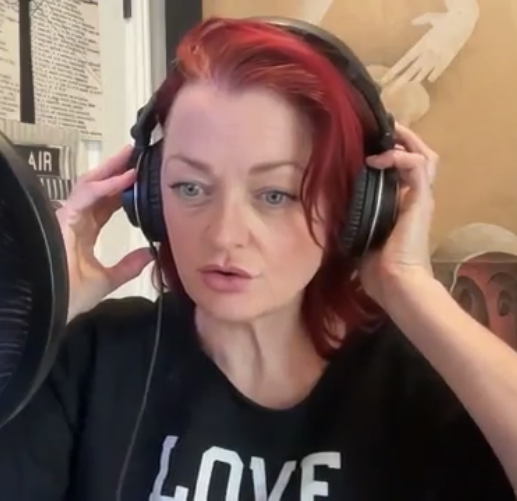 Andie Grace
Andie Grace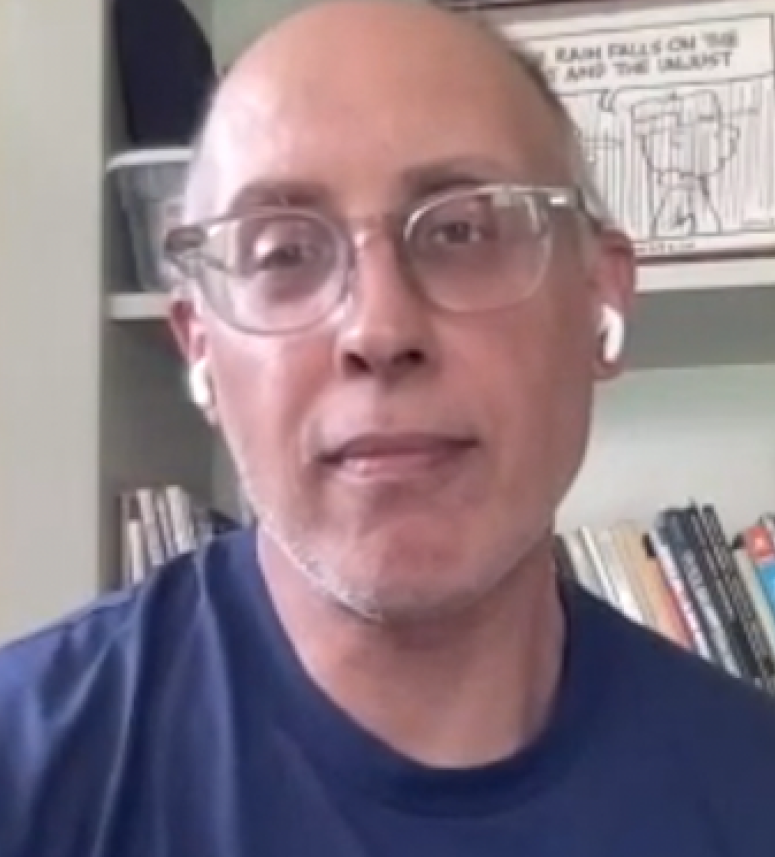 Denzil Meyers
Denzil Meyers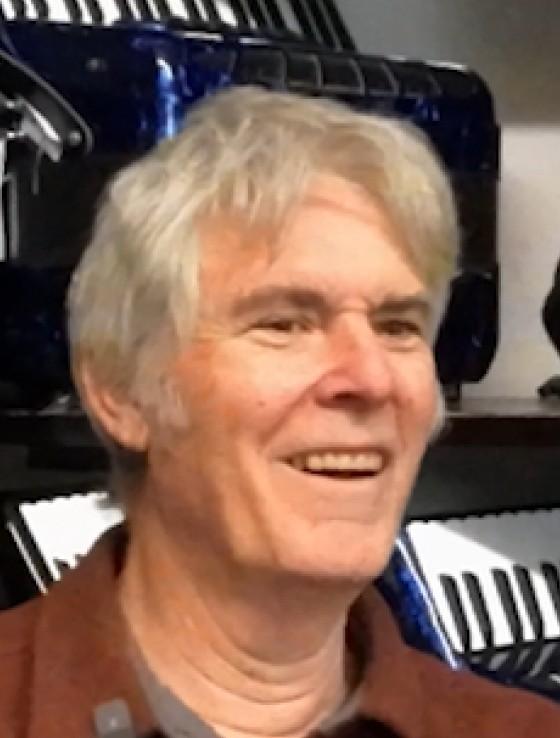 Kimric Smythe
Kimric Smythe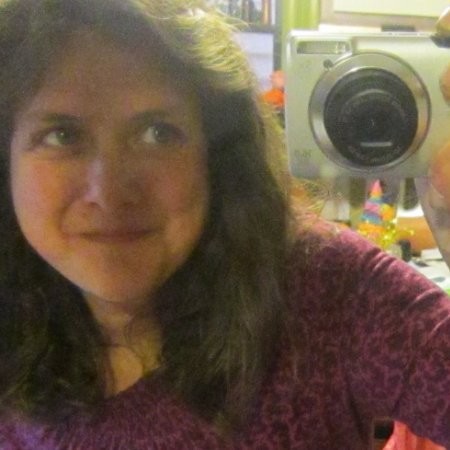 Lexie Tillotson
Lexie Tillotson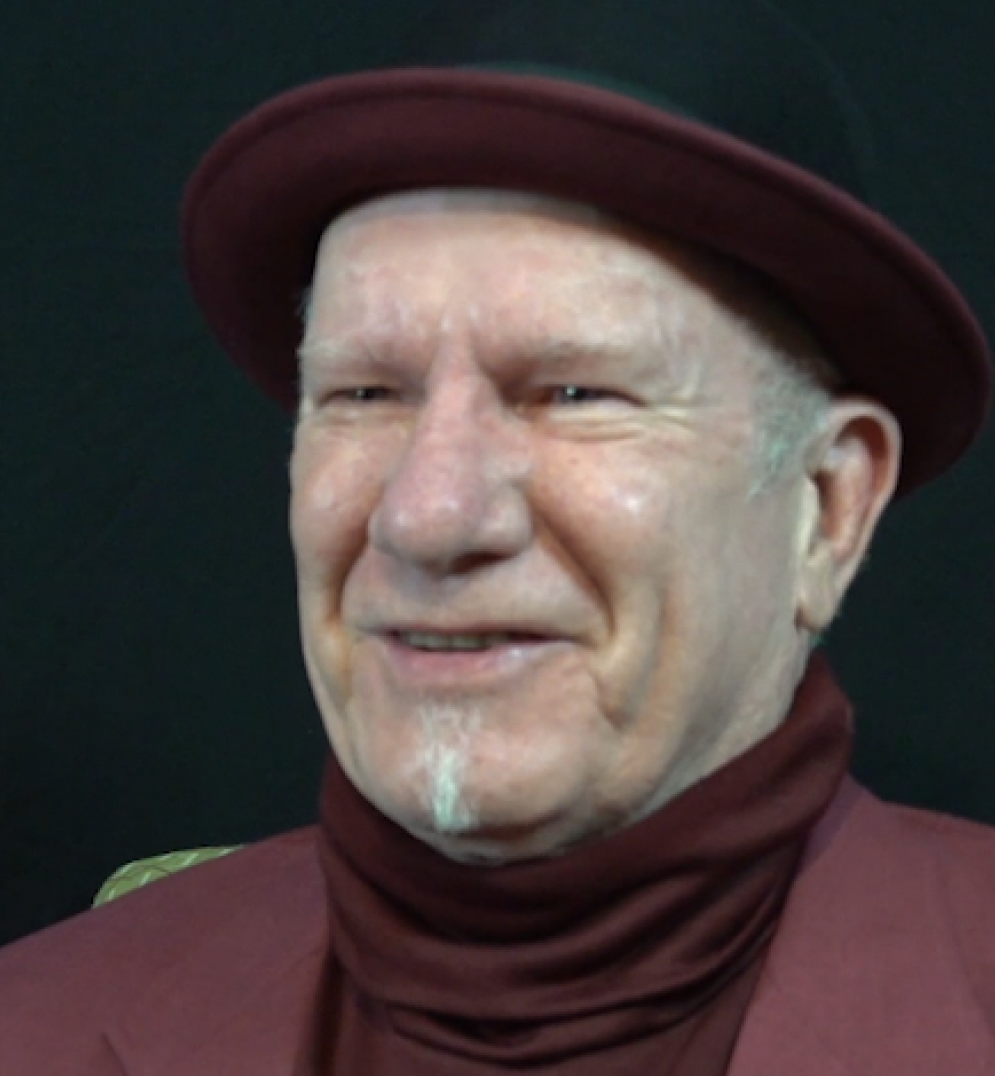 Steve Mobia
Steve Mobia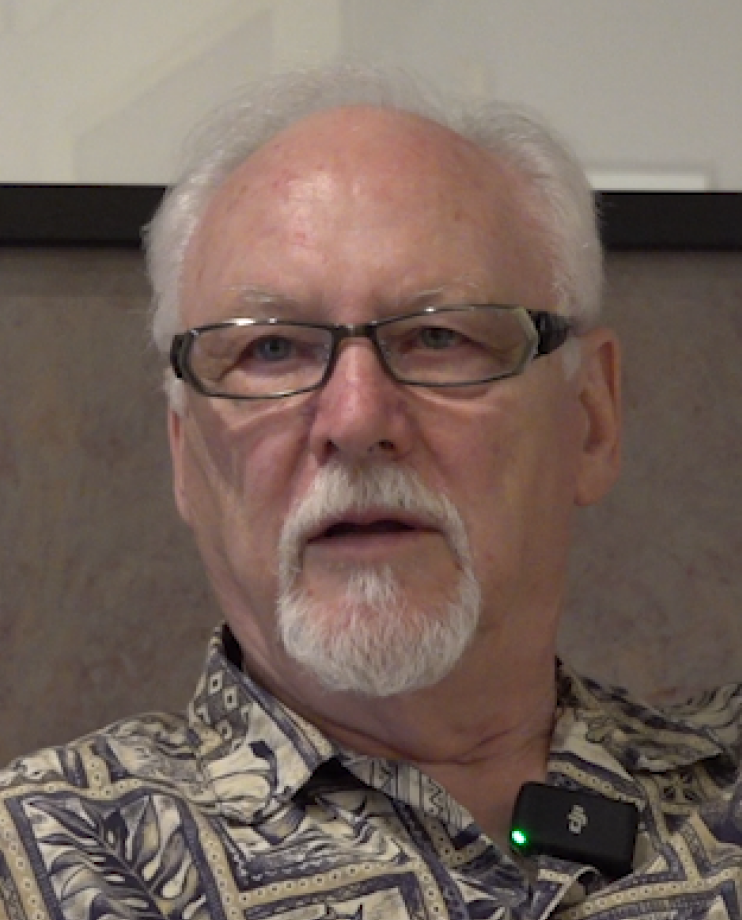 Stewart Harvey
Stewart Harvey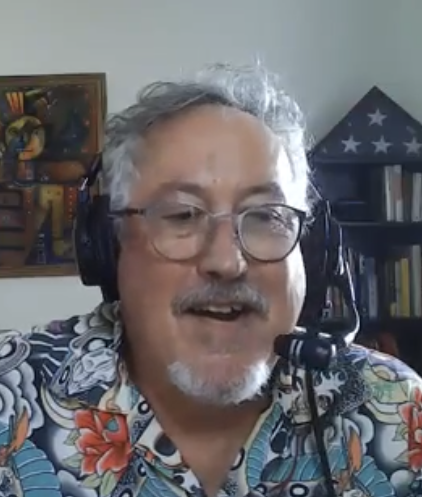 Stuart Mangrum
Stuart Mangrum
